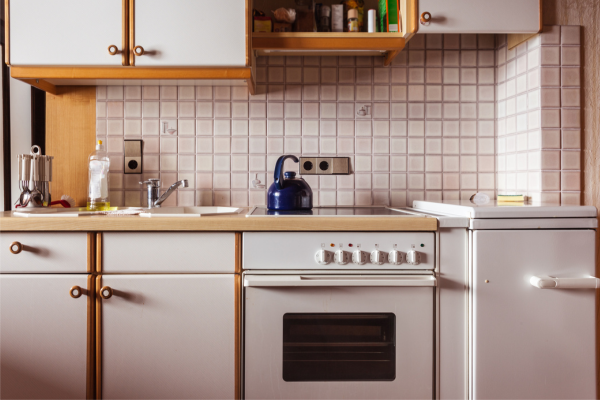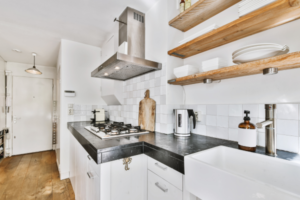Introduction
The kitchen is often considered the heart of the home, a place where delicious meals are prepared and cherished memories are created. However, without proper organization, this living space can quickly become chaotic and stressful. The art of organization in the kitchen is essential to maintaining efficiency, cleanliness and a pleasant cooking experience. In this article, we’ll explore the secrets to achieving a well-organized kitchen, from organization and storage solutions to meal planning and kitchen layouts.
I. Organization: the basis of the organization
1. Before diving into the ins and outs of kitchen organization, it’s crucial to start with the basics: organizing. Over time, kitchens tend to accumulate a series of appliances, utensils and appliances that may no longer serve a purpose. The first step to an organized kitchen is to evaluate your belongings and eliminate items that are no longer needed. Here’s how to get started:
2. Clear out unused items: Go through your kitchen cabinets, drawers, and countertops and identify items you haven’t used in the past year. Consider donating, selling, or discarding these items to free up valuable space.
3. Simplify Multiples: Do you have multiple kitchen appliances that serve the same purpose? Only keep the ones you use regularly and donate duplicates.
II. Efficient storage solutions
Once you’ve organized your kitchen, it’s time to focus on efficient storage solutions that make the most of the available space:
1) Closet Organizers: Install closet organizers like pull-out shelves, lazy Susans, and spice racks to maximize closet space and make items more accessible.
2) Drawer Dividers: Use drawer dividers to keep utensils, cutlery, and cooking utensils well organized and easily accessible.
3) Clear Containers: Store pantry items like grains, cereals, and pasta in clear containers to easily identify their contents and maintain freshness.
4) Hooks and Panels: Hang hooks and panels on walls or the inside of cabinet doors to efficiently store pots, pans, and cooking utensils.
5) Floating Shelves: Consider adding floating shelves to display cookbooks, decorative items, or frequently used kitchen utensils, freeing up counter space.
III. Meal planning and organization
Meal planning is a crucial aspect of kitchen organization that can save time and reduce food waste. Here are some strategies to incorporate into your routine:
Evaluate appliances: Evaluate your kitchen appliances and gadgets. If you have devices that accumulate dust, it may be time to reevaluate your needs.
1) Weekly Meal Plans: Create a weekly meal plan that outlines what you will prepare for breakfast, lunch, and dinner. This can help you streamline your grocery shopping and reduce impulse purchases.
2) Prepare in advance: Spend time each week preparing ingredients like chopping vegetables, marinating proteins, or making sauces. Store them in labeled containers for easy access during busy weekdays.
3) Inventory management: Keep track of the contents of your pantry and refrigerator to avoid purchasing items you already have. Use a FIFO (first in, first out) system to ensure that the oldest items are used first.
IV. Kitchen layout and flow
The layout of your kitchen plays a significant role in its organization and functionality. Consider these tips to optimize your kitchen layout and flow:
1) Work Triangle: The classic kitchen work triangle consists of the stove, refrigerator and sink. Arrange these elements in a triangular formation to minimize unnecessary movement and increase efficiency.
2) Zones: Divide your kitchen into different zones for specific tasks, such as prep zone, cooking zone, and cleanup zone. Organize your tools and supplies appropriately in each zone.
3) Island or Peninsula: If space allows, consider adding an island or peninsula with built-in storage and counter space. This can serve as a central workspace and additional storage area.
4) Traffic flow: Make sure there is enough space for multiple people to move comfortably around your kitchen without causing congestion.
V. Labeling and Organization Systems
Labeling and organization systems are the finishing touches that can take your kitchen organization to the next level:
1) Label everything: Use labels on containers, shelves, and drawers to clearly mark where items belong. This makes it easier for everyone in the house to stay organized.
2) Meal prep containers: Invest in a set of reusable meal prep containers of various sizes. They are perfect for storing prepped ingredients and leftovers in an organized manner.
3) Recipe organization: Use a binder or digital app to organize your favorite recipes. Categorize them by type (e.g. breakfast, dinner, desserts) for easy reference.
Conclusion
The art of kitchen organization is a combination of organization, efficient storage solutions, meal planning, kitchen layout and organization systems. By implementing these secrets revealed in this article, you can transform your kitchen into a well-organized and functional space. This will not only improve your cooking experience but also save time and reduce stress in your daily life. Remember, kitchen organization is an ongoing process, so make it a habit to periodically review and update your systems to maintain an efficient, hassle-free culinary haven. With dedication and commitment to organization, you will be able to enjoy more enjoyable and efficient times in your kitchen for years to come.



